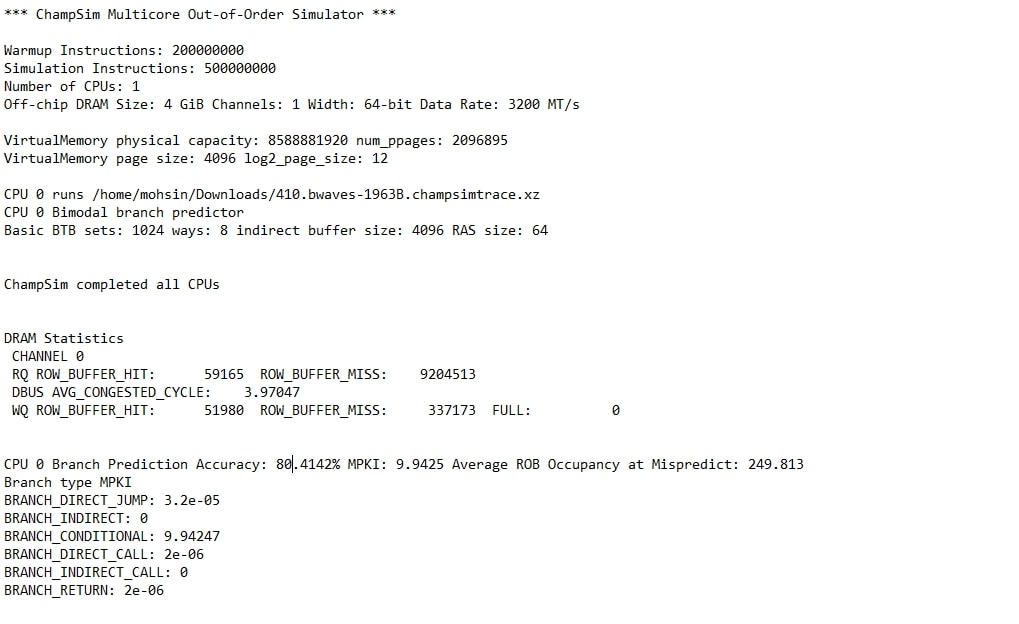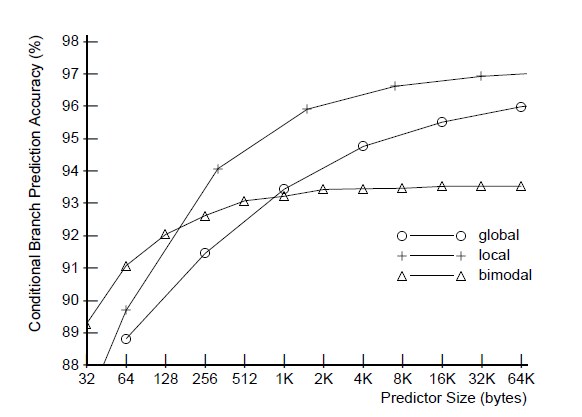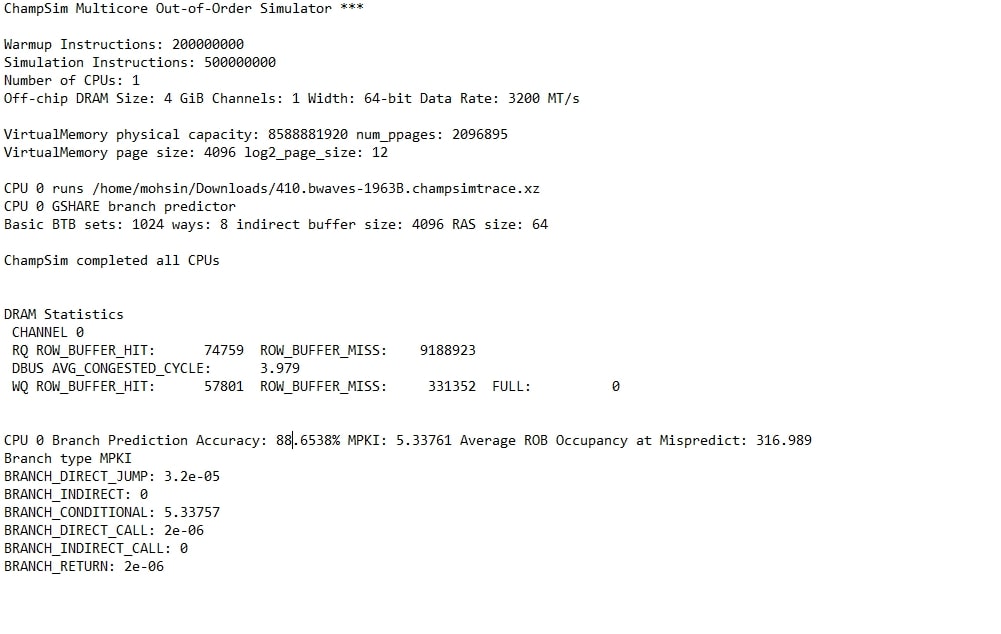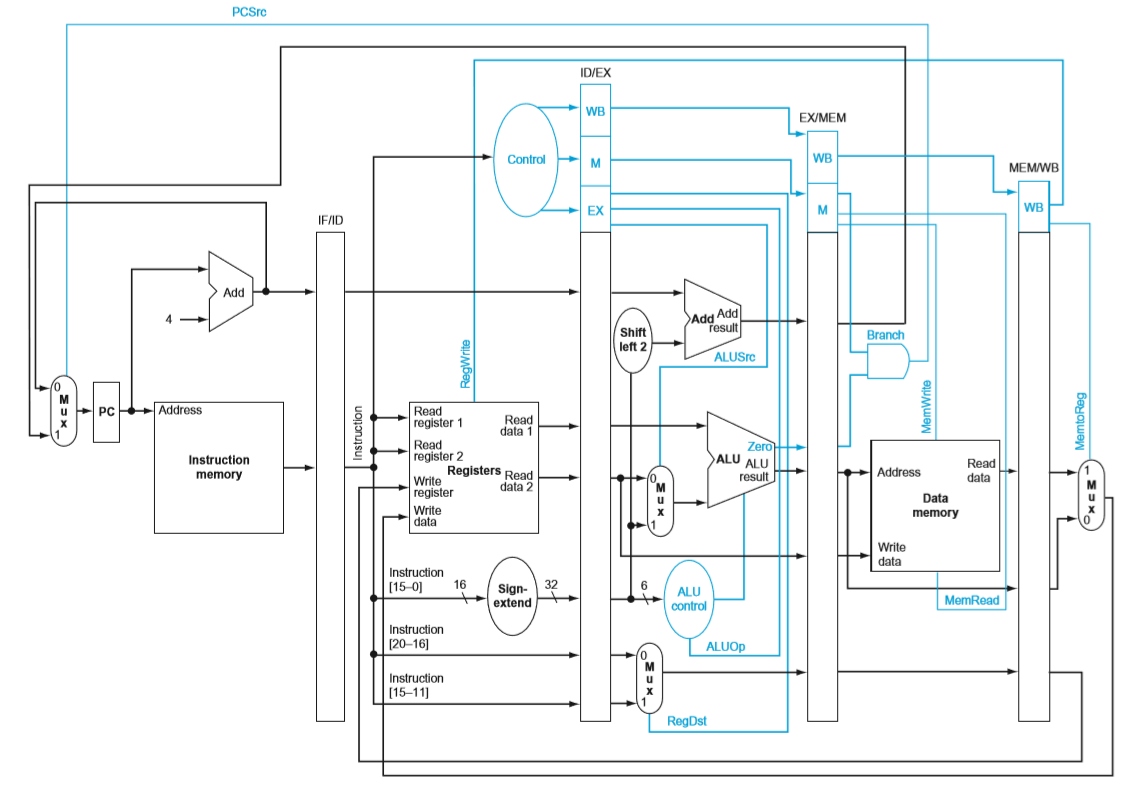This project implements and evaluates Bimodal and Gshare branch predictors using the CHAMPSIM simulator. The focus is on analyzing their performance and accuracy in different workloads. The Gshare predictor, leveraging both local and global history, demonstrates superior accuracy in capturing complex branch behavior patterns. The findings contribute to optimizing processor performance and inspire advancements in branch prediction techniques.
Objectives
The objective of this project is to gain insights into the performance of bimodal and gshare branch predictors and contribute to the advancement of branch prediction techniques for improving processor efficiency in modern computer systems.
Socio-Economic Benefit
The socio-economic benefits of the project include improved processor efficiency, cost reduction, energy savings, enhanced application performance, and advancements in computer architecture. These benefits have a positive ripple effect, influencing various sectors and contributing to a more efficient and sustainable digital ecosystem.
Methodologies
1. Background research:
Before implementing the bimodal and gshare predictors using ChampSim, we conducted background research to understand the theory and implementation of these predictors. We reviewed relevant literature and identified the key features and characteristics of each predictor. This helped us to design an appropriate implementation and evaluate the performance of the predictors.
2. ChampSim setup:
We set up the ChampSim simulator on Ubuntu OS through terminals and configured it to simulate a processor with bimodal and gshare branch predictors. We chose the default simulator settings and ensured that the simulator was accurately modeling the processor behavior.
3. Benchmark programs:
We selected a set of benchmark programs to evaluate the accuracy and performance of the predictors. The benchmarks were chosen from the SPEC CPU 2006 suite, which includes a variety of programs with different characteristics and workloads. We ensured that the benchmarks were representative of typical processor workloads and covered a range of branch behavior.
4. Implementation:
We implemented the bimodal and gshare predictors using ChampSim’s built-in prediction module interface. For the bimodal predictor, we used a table with entries to store the branch outcomes, where m is the number of bits used to index the table. For the gshare predictor, we used a table with entries and a global history register to store the branch outcomes, where m is the number of bits used to index the table. We used the default values for the table and global history register sizes.
5. Simulation and Analysis:
We ran the benchmark programs using the implemented bimodal and gshare predictors and recorded the accuracy and performance metrics provided by ChampSim. We analyzed the results and compared the accuracy and performance of the two predictors. We also evaluated the behavior of the predictors under different types of workloads and branch behavior. We discussed the results and drew conclusions about the suitability of bimodal and gshare predictors for different types of workloads and branch behavior. We identified the strengths and limitations of each predictor and provided insights into their practical use in modern processors. We also discussed the implications of our results for future processor design and research. Overall, our methodology involved setting up the ChampSim simulator, implementing the bimodal and gshare predictors, running benchmark programs, and analyzing the results to evaluate the accuracy and performance of the predictors. This approach allowed us to gain a better understanding of the behavior of these predictors and their suitability for different types of workloads and branch behavior.
Outcome
It was observed that the gshare predictor outperformed the bimodal predictor in most cases, with an average prediction accuracy of 88% compared to 80% for the bimodal predictor. The misprediction rate was also lower for the gshare predictor, with an average rate of 12% compared to 20% for the bimodal predictor. The impact of different parameters, such as the history length and table size, on the performance of the predictors was also analyzed. It was found that increasing the history length and table size improved the performance of both predictors, with the gshare predictor showing a greater improvement. The execution time for each predictor was also measured and it was observed that the gshare predictor had a slightly higher execution time compared to the bimodal predictor. Based on these findings, it can be concluded that the gshare predictor is a more effective branch predictor compared to the bimodal predictor.











